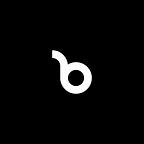How did you get into the world of brand identity design — and what made you stay?
I knew right from the start. I´ve always been more of a problem solver than an artist. Identity design often lets me play around with my biggest passions in design; typography, custom lettering, and illustration. Combining these in logo design, and creating a universe around the brand reminds me of how I used to play and think as a child. I´ve kind of taken the back way into it, working with many other aspects of design and advertising but I think that is a strength in itself. It changes the way you look at problems and challenges. It is not just playing around though, good identity design is the most challenging part of visual communication. But that’s also part of why I love it.
Is there a perfect brand identity brief? What does it look like?
It’s the same as any other challenge, preparations are essential. The client needs to have a clear mind about why. Why do they need this, what are their core values? Both designer and client need to understand who the client is. Surprisingly many haven’t thought this trough. We are happy to be part of the strategic process and guide the client on the road to create a good brief. Communication, collaboration, and level of expectation are important factors.
Blake recently did the Höegh branding. How do you creatively approach a project like that — from beginning to end?
Having the same level of expectations, when is what delivered, when do we touch down together. Good communication is important. When the brief is in place we do an analysis of the client's vision, values and needs we can start research. In this part, we work closely with the client. After it is only the rest left, in this phase we withdraw a bit and focus on developing solutions and answer the brief we have created in partnership with the clients. If we need to involve any of our friends (Blake and Friends) this will be the part we do so. In this case, we chose to reach out to Lisa Tegtmeier from Hamburg, after the strategic phase we knew we wanted a playful look on it and Lisas style was perfect. This is the process we create the visuals based on the tone of voice we have set earlier in the process.
On this job in particular a lot of the strategic job was already done by the client, and they had prepared for the process. This foundation carries the entire brand and it has to be solid. It also gives us creative freedom within a set of frames that helps us focus on the right areas to build a strong brand and guidelines that fit the individual client.
What is your preferred client/studio relationship or process when working on a brand identity concept?
I like the first part of the process to be the same for all clients. Finding out together the whys and wherefores. Then, when we take a step back to work creatively the process can take any direction depending on the previous decisions and how our foundation is built.
Typically, it’s not so different from client to client, some have a clearer thought on why they come to us in the first place, either an idea or a problem. Other needs us to help them analyze this and find a path. Either way, the end goal is the same and both starting points have their pros and cons.
What do you or your studio do differently than others in regard to brand identities?
I’m not sure what we do differently than other studios, but we try to work harder and more organized in the research phase. We steer away from the classic team set up and involve whoever has the qualifications among our staff that is needed for this brief or client.
What are your thoughts on brand guidelines? How do they fit into the process?
Consistency is important, and so is being true to your brands tone of voice. This is where your guidelines are important so you don’t wash out your image and keeping your brand on the path you have set out on. It is important to find a good balance as brands change along with the world at a terrifying speed. Don’t get locked down to hard when your competition changes, and don’t be so fluid that no one understands what you are trying to communicate.
Do you have a ‘truth’ you follow when working on visual identities?
Its “easy” to make something beautiful, the hard part is to make something right and smart. Don’t get too carried away with trends, and dare to be different.
Has brand identity design changed in recent years? What do you expect for the future?
Absolutely yes. And I don’t think we have seen the half of it yet. It’s impossible to say for certain whats next, but we see an increasing amount of living identities and adaptive profiles. There is also a trend in branding to create what I call “festival branding”, by that I mean that some seem to want to put all new tech and ideas into a profile, often it looks beautiful and it's super “up-to-date” and modern, but also often lacks the ability to withstand time. It’s important not to forget that classic is classic for a reason. It is, of course, important to be curious and experimental but don’t overdo it and use it at the right times.
Bjørn I. Thomassen is a designer at Blake and a board member for Grafill both located in Oslo. Blake is a branding agency that develops strategic advertisement and digital solutions. You can read more about them here.
Behind Brands™️ is an interview series by Brandpad, initiated to explore the people and processes behind visual identities. See all the interviews here.
For questions, please contact us.
